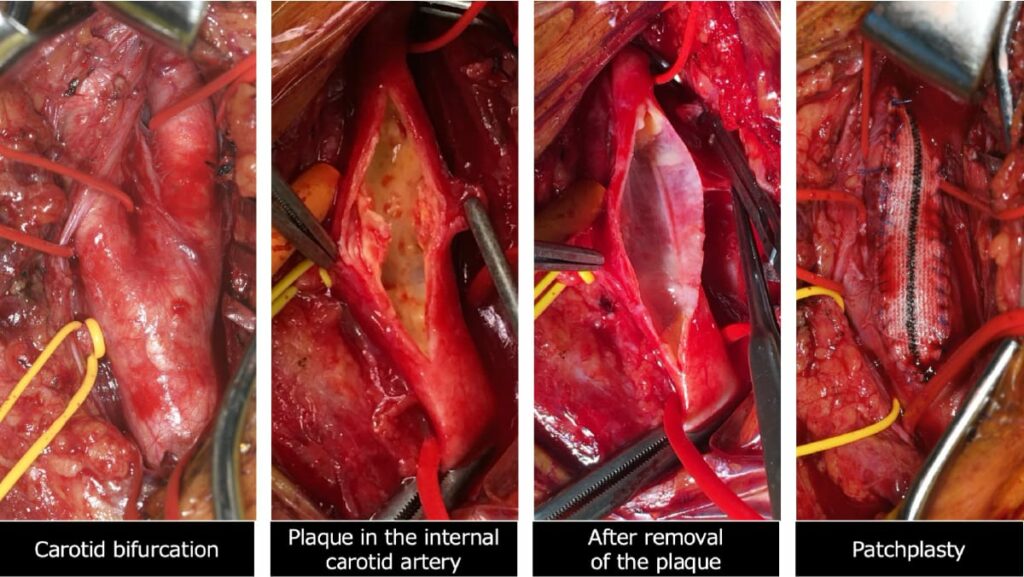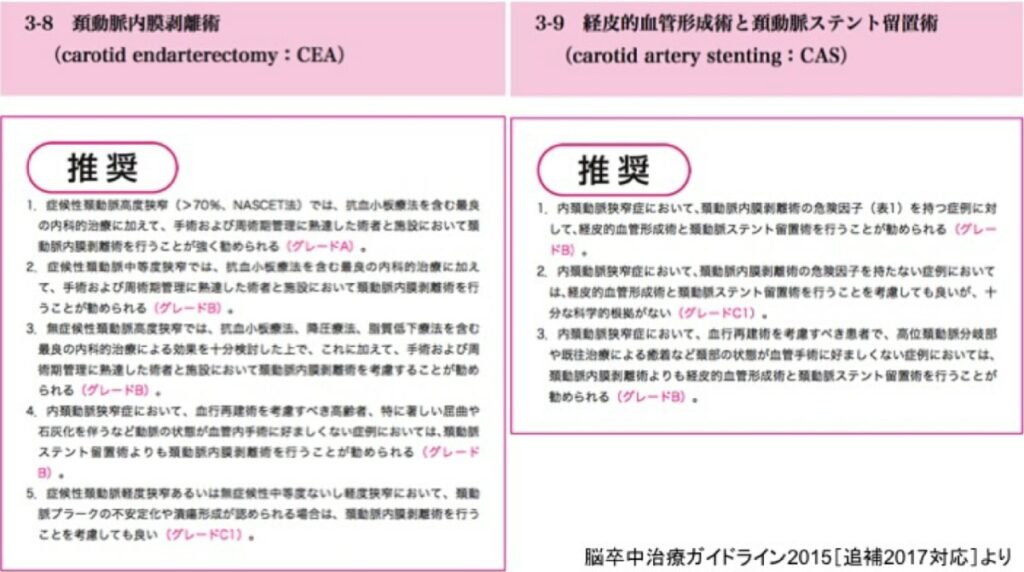What is carotid artery stenosis?
What is carotid artery stenosis?
The pulse of the normal carotid arteries can be felt on both sides of the neck. When the carotid artery becomes narrowed with an atherosclerotic mass (plaque), the pulse can be diminished, or noise can be heard using a stethoscope.
Such plaques may cause brain infarction. Patients with small plaques are treated with oral antiplatelet drugs (so-called “blood-thinners”). Patients with large plaques may need surgery to remove the plaque (carotid endarterectomy [CEA]: Fig. 1) or endovascular treatment (carotid artery stenting [CAS]). Early detection is important, as with other arterial diseases.

CEA or CAS, which is better?
Comparing the two treatments, CEA has been reported to be better than CAS in general. The Japanese Guidelines for the Management of Stroke (Figure 2) strongly recommend CEA for symptomatic (transient ischemic attack [TIA] or brain infarction) carotid stenosis > 50%. The guidelines also recommend CEA for asymptomatic, carotid stenosis > 70%. CAS is recommended when CEA is not suitable.
In our department, the perioperative mortality rate has been 0%, and there have been almost no serious complications such as cerebral infarction. We carefully monitor cerebral blood flow during surgery by stump pressure measurement and blood flow monitoring (near infrared spectroscopy). Once the surgery is successful, an outpatient follow-up about once a year is usually sufficient.

